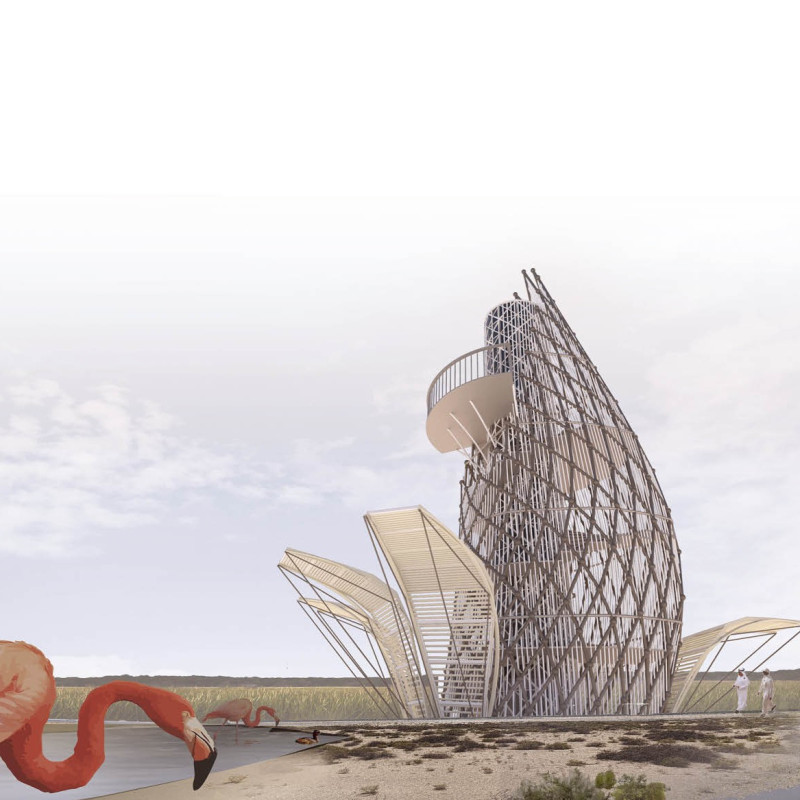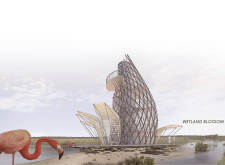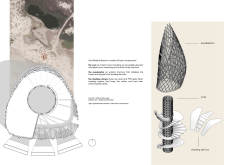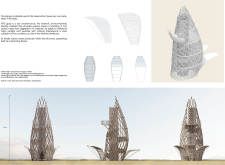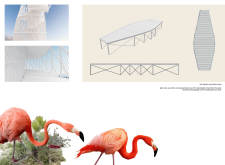5 key facts about this project
The Wetland Blossom is an observation tower located in the Wathba Wetlands. It is designed to fit into its natural environment while providing facilities for visitors. The overall concept is inspired by natural forms, focusing on both functionality and visitor experience. Three main components work together to create this inviting structure.
Core Component
At the center of the Wetland Blossom is the core, which includes an accessible elevator and a plant room. This interior space is crucial for the tower's operations, allowing people to move around easily and access essential facilities. The core serves as a focal point, drawing visitors in and giving them a sense of connection to their surroundings.
Exoskeleton Framework
Surrounding the core is the exoskeleton, which provides structural support and stability. This outer framework enhances the building's durability and serves a visual purpose as well. The relationship between the solid core and the delicate exoskeleton creates a balance that is visually engaging. It ensures that the tower can withstand environmental challenges while maintaining an appealing form.
Shading Canopy
The shading canopy is another important feature, contributing to visitor comfort. Made from steel and PTFE glass fabric, the canopy helps block out excessive sunlight. This design mimics flower petals, adding an organic beauty that connects the tower to its ecosystem. With this feature, the experience of being in the space becomes more enjoyable and aware of nature.
Materials and Durability
The choice of materials plays a significant role in the tower's functionality and durability. Concrete is used for its structural strength, while steel provides necessary support in the exoskeleton. PTFE fabric is selected for its low maintenance and ability to resist fire, making it suitable for harsh weather conditions. Each material contributes to the building's resilience, ensuring it remains welcoming over time.
Light filtered through the shading canopy creates patterns on the ground, connecting the tower's interior with the dynamic landscape of the wetlands.


